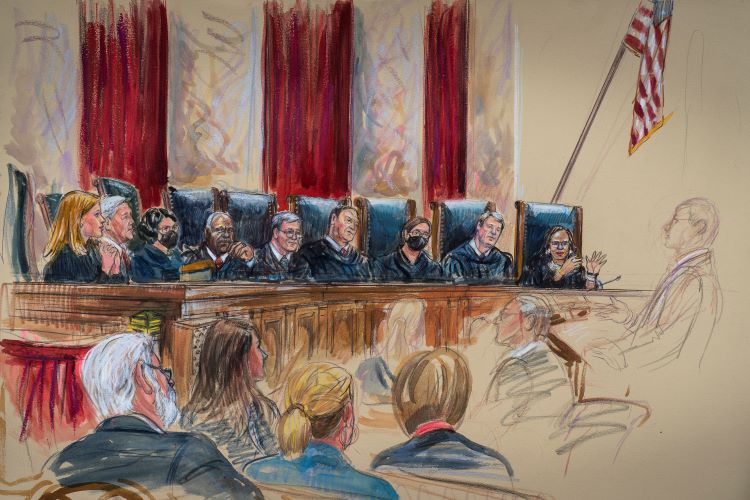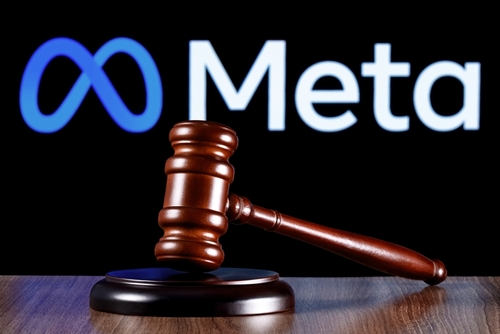Justice Jackson, other liberal SCOTUS justices appeared determined 'to go down swinging' in voting-maps case

In this sketch drawing by court artist Dana Verkouteren, the Supreme Court justices hear arguments on the opening day of its new term Oct. 3. Sketch by Dana Verkouteren via the Associated Press.
U.S. Supreme Court Justice Elena Kagan called a challenge to Alabama’s congressional voting maps a “slam dunk” during oral arguments Tuesday, even as the conservative justices on the high court appeared to be searching for a narrow way to uphold them.
Alabama argues that its maps were drawn with “race neutral” principles, and there is no violation of Section 2 of the Voting Rights Act absent some kind of discriminatory intent, Politico reports.
Even conservative justices appeared to reject the discriminatory intent argument, but “key voices in the court’s conservative majority” appeared open to changing the test for voter dilution established in Thornburg v. Gingles in 1986, according to the Politico.
Alabama’s congressional maps give Black voters a majority in just one of seven voting districts, even though the state’s population is about 27% Black. A three-judge panel had required Alabama to draw a new map in January after finding a violation of Section 2 of the Voting Rights Act.
The Supreme Court’s newest justice, Justice Ketanji Brown Jackson, may have been most forceful in criticizing Alabama’s case, according to Politico. The publication reports that Jackson “forcefully pushed back” against the state’s claim that Section 2 violates the Constitution’s guarantee of equal protection of the laws for everyone.
Courthouse News Service also covered Jackson’s comments.
“I don’t think we can assume that, just because race is taken into account, that that necessarily creates an equal protection problem,” Jackson said. “Because I understood that we looked at the history and traditions of the Constitution, at what the framers and the founders thought about. … It became clear to me that the framers themselves adopted the equal protection clause, the 14th Amendment, the 15th Amendment, in a race-conscious way.”
According to the Washington Post, Jackson, Kagan and the other liberal justice on the court, Justice Sonia Sotomayor, “seemed determined Tuesday to go down swinging” as they supported the maps challenge.
Other publications covering the voting-maps arguments Tuesday include the New York Times and the Associated Press. How Appealing links to additional coverage.
Section 2 of the Voting Rights Act bans voting practices, procedures or standards that result “in a denial or abridgment of the right of any citizen of the United States to vote on account of race or color.” The section says that happens when, “based on the totality of circumstances,” racial minorities “have less opportunity than other members of the electorate to participate in the political process and to elect representatives of their choice.”
The Supreme Court allowed Alabama to implement its map when it agreed to hear the case in February.
The ABA submitted an amicus brief in July that asked the Supreme Court to rule that the voting map violates Section 2.
The case is Merrill v. Milligan.



